On the 100th anniversary of the end of the First World War, white wreaths evoked Ottawa’s first Armistice Day
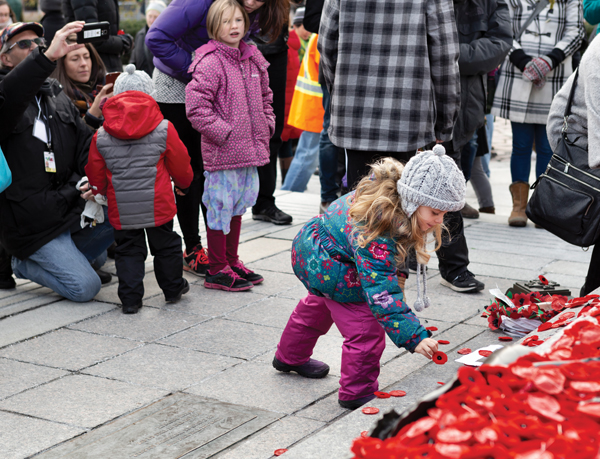
They began to gather at 7 a.m., the first of a crowd that swelled to 35,000 at the Remembrance Day service in the nation’s capital. Many came to mark the 100th anniversary of the Armistice that ended the First World War; some came to honour relatives or friends, bringing along medals, photos and mementos; others came to honour the sacrifice of the 117,000 who have died in military service throughout Canada’s history, and in gratitude to the living who serve and the veterans who continue to suffer.
During the ceremony, a special wreath representing all those who served in the Great War was placed by John Goheen, a school principal from Port Coquitlam, B.C.
“The Great War has cast a long shadow on so many families, including mine,” said Goheen, who also leads The Royal Canadian Legion Pilgrimage of Remembrance. His great uncle Charles Goheen is buried with others from his unit in the Wanquetin Communal Cemetery in France, killed by a German bombing raid on a train station that hit their nearby billets. Charles’ cousin Walter Goheen was caught by machine-gun fire on Oct. 1, 1918, his body never recovered; his name is on the Canadian National Vimy Memorial in France.
Goheen’s grandfather Francis Niles lied about his age and turned 18 on the front lines, part of the 26th Battalion fighting south of Ypres in March 1916. “The back of his leg was blown off just a few weeks later. He was a farmer before the war, and couldn’t return to his occupation. So, his life changed forever—and so did our family. He was a farmer in the Depression and could barely manoeuvre.”
The anniversary “gives Canadians an opportunity to look back and see what the Great War was about, what happened in those four years, and what it did for Canada. From a country of just over 7.3 million, we get 600,000 in uniform, and of the 345,000 who served on the Western Front, we get 173,000 casualties, 60,000 battlefield fatalities and 8,000 more within the next couple of years.
“Three of 10 survived physically unscathed, but what did it do to them and their families? It had an effect on my grandfather his entire life.”
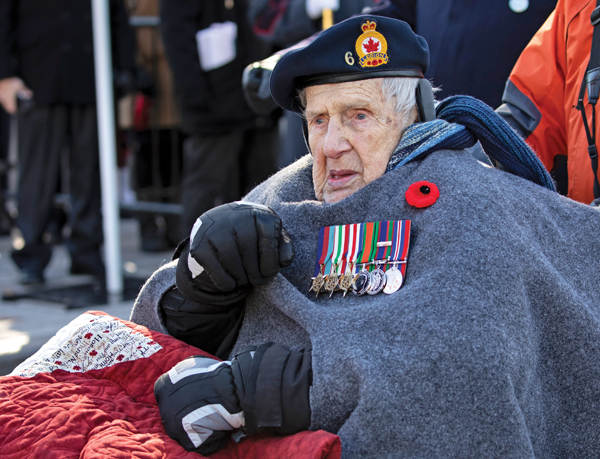
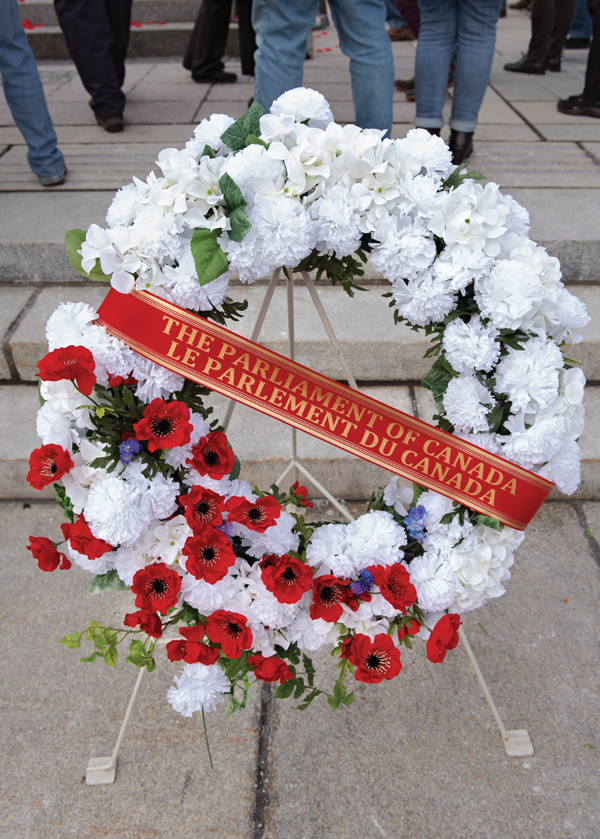
Veterans, serving members and their families from all military eras were honoured throughout the moving ceremony, which took place at the National War Memorial on Wellington Street.
The Ottawa Children’s Choir, conducted by Allison Prowse, began the ceremony with “O Canada,” followed by “Last Post” played by trumpeter RCAF Sergeant Frederic Paci. As the bells in the Peace Tower tolled the 11th hour, the 30th Field Regiment marked the beginning and end of the two-minute silence by firing C3 howitzers positioned behind the East Block on Parliament Hill.
As the mournful sounds of “The Lament,” played by Sgt. Malcolm Odell, filled the air, five CF-18 Hornets from CFB Cold Lake in Alberta flew overhead in the “missing man” formation, their engines rattling downtown windows. “The Rouse,” played by Paci, followed.
The Act of Remembrance was recited in English by Royal Canadian Legion Dominion President Tom Irvine, in French by Legion Grand President Larry Murray and in Michif by aboriginal veteran Guy Mandeville, punctuated by the first cracks of the 21-gun salute, which fired roughly every minute.
“We honour those whose names we know and those whose names are known to God alone,” said Canadian Armed Forces Chaplain General Major-General Guy Chapdelaine.
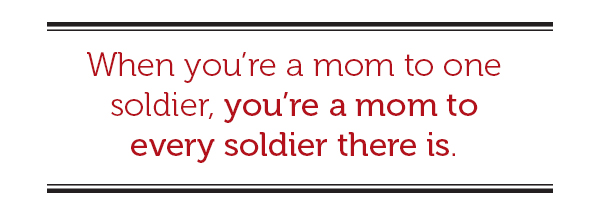
To a choir rendition of “In Flanders Fields,” the wreath ceremony began with the placing of white wreaths with red poppies, inspired by those of a century ago, by the viceregal party, including Governor General Julie Payette; National Memorial (Silver) Cross Mother Anita Cenerini (for the mothers of Canada); Minister of National Defence Harjit Sajjan; Member of Parliament and veteran Karen McCrimmon (for Veterans Affairs Canada); Chief of the Defence Staff General Jonathan Vance; Senator Peter Harder; Sophie Grégoire Trudeau (the Government of Canada); and Dominion President Tom Irvine (veterans of Canada). Sadie Vogel, Hannah Christensen, Maria Singson and Emma Cervinka, winners of the Legion’s national senior poster and literary contests, placed a wreath on behalf of the youth of Canada. Army cadet Markus Valtonen, sea cadet Shane Watson, air cadet Angelica Filipe and Junior Canadian Ranger Shayden Younker acted as wreath bearers.
In his prayer for peace and tolerance, Chapdelaine added a plea for remembrance of those who returned from past wars with injuries both visible and invisible and “compassion for our brothers and sisters who, for reasons known and unknown, have considered or attempted suicide. May we be compassionate for the families and friends impacted by these tragedies.”
For the first time, the Silver Cross Mother is the parent of a soldier who took his own life. Anita Cenerini visited the Memorial Chamber in the Peace Tower on Nov. 10 and saw the name of her son, Private Thomas Welch, which had been added to the Books of Remembrance after a 13-year struggle to have the CAF recognize that his death in 2004 resulted from his deployment to Afghanistan. Her son’s should not be the last name added to the books, she said.
“When I think of the 117,000 men and women who have died in service to our country, I can’t stop my heart from feeling the pain and sorrow of lives lost too soon, of families and comrades and friends who grieve and mourn,” and those whose contact with their military family was also cut off by suicide. “When you’re a mom to one soldier, you’re a mom to every soldier there is,” she said. For 13 years “there was an abyss between my family and the military,” years when “I had lost the military family, too.”
Cenerini will continue as a mental-health advocate. “I have made Thomas’s voice vocal beyond his death and that wasn’t an easy task. But it’s an important task because with it comes the hope that people will be able to speak in their own voices and have their voices heard.”
She noted that this year the sacrifice of Lieutenant-Colonel Samuel Sharpe, a member of Parliament who died by suicide after serving in the First World War, has finally been officially honoured, a century after his death.
“The healing has started,” she said. It was a theme throughout the day.
“We remember, therefore we are grateful” to those who risk their future on our behalf, knowing some return from service whole in body, but confronted by looming issues like post-traumatic stress disorder, said Rabbi Reuven Bulka, honorary chaplain of the Royal Canadian Legion Dominion Command, in his benediction. “May those who died be remembered lovingly; may those who were injured be healed in body and spirit.
“How do we show gratitude to our veterans, verily our first responders to evil?” he asked, and answered: “by expressing our support…in all places and all times; by teaching our children how much in their debt we always will be.”

In addition to the ceremony, thousands of pictures of the fallen were displayed on the Virtual Wall of Honour and Remembrance; more than 117,000 poppies representing the dead cascaded on the Peace Tower and Centre Block and the glass tower of the National Arts Centre; and at the going down of the sun, Dominion Carillonneur Andrea McCrady played “Last Post” before the bell in the Peace Tower tolled 100 times in salute to the centenary of the signing of the Armistice that ended the First World War.
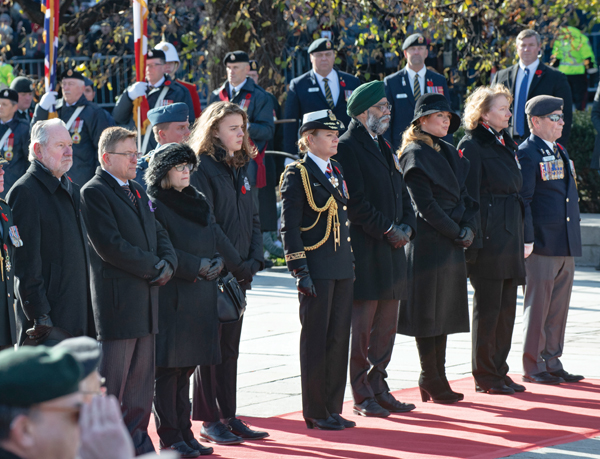
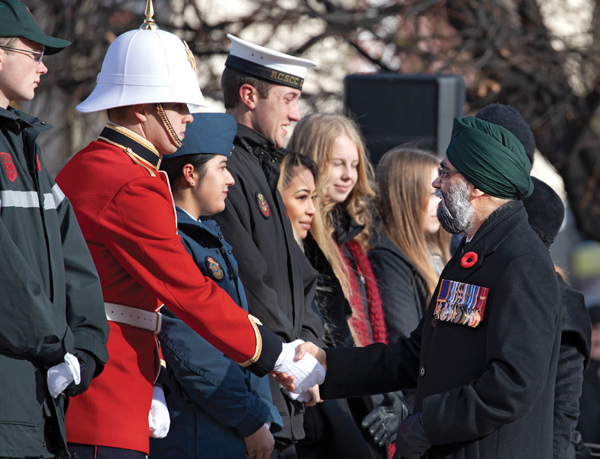
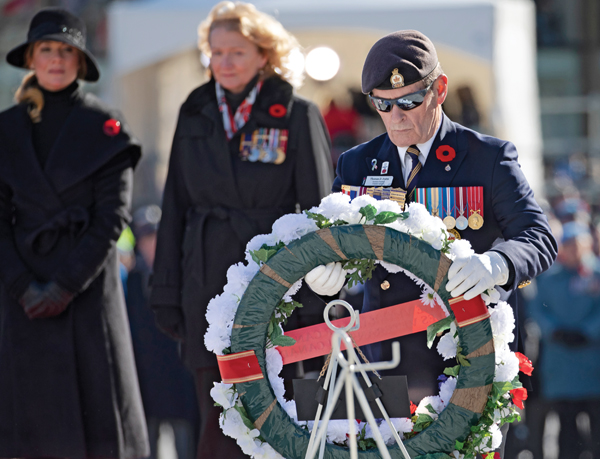
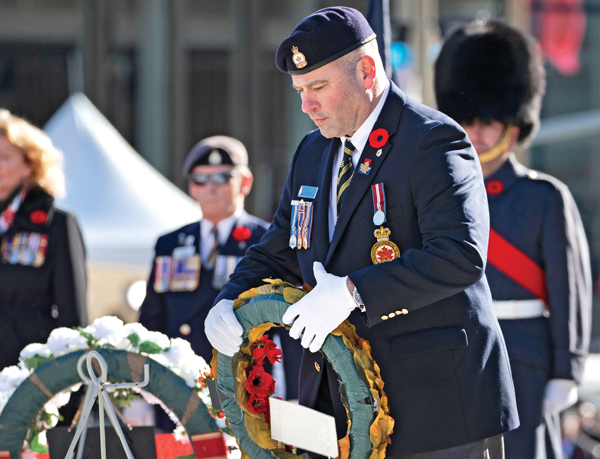
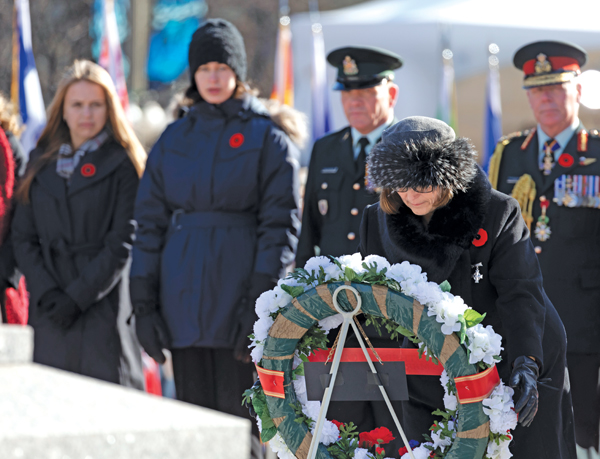
Advertisement












